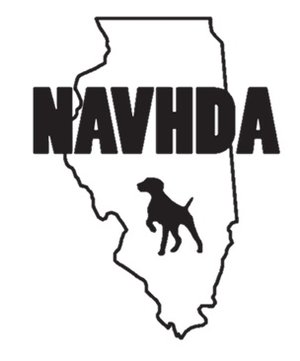NAVHDA is making a determined effort to unify North American versatile gun dog enthusiast. In 1969, it set up rules and regulations for tests which evaluate the versatile breeds. In the development of good gun dogs, it is imperative that dogs be tested in various stages of maturation. Performance records must be kept since they provide the bricks and mortar with which the discriminating breeder builds. To be truly meaningful, test for versatile hunting dogs must meet certain criteria. They must be conducted in an environment which reflects actual hunting conditions and situations. They must tell all characteristics required of a good versatile dog. Judges must be knowledgeable, consistent and objective. All testing and evaluation is to be within the context of judging dogs as useful, productive hunting companions. NAVHDA tests have been designed with these in mind. In addition, its record keeping provides an accurate, complete performance evaluation on each dog tested. NAVHDA conducts four kinds of test: Natural ability Test for young dogs, Utility Preparatory Test for the functional hunting dog, Utility Tests for the finished gun dog, and NAVHDA Invitational Tests, an advanced test for dogs that have earned the exceptional Utility test scores. In order to eliminate direct competition between dogs at NAVHDA tests, the dogs are judged one at a time, by three judges, with their performance scored against a standard. The Only exception to this is that dogs running in a NAVHDA Invitational Test are braced in the field so that each dog can demonstrate his willingness to back and honor. If all dogs participating in a test perform well, all could receive a Prize I, II, or III.
Natural Ability Test
The three-part Natural Ability Test is designed to test the inherited hunting instincts of pups up to 16 months of age. In the field work, the pup must search for, find and point game. The pup need not be steady. Two blank shots are fired while the pup is in the field to test gun sensitivity. In the water segment of the test, the pup is expected to enter the water and swim twice. A retrieving dummy is thrown to encourage the pup to enter the water, but a retrieve is not required. The third part of the test is the track of a running bird, which testes the pups ability to concentrate as is necessary of retrieving a crippled bird. Throughout the entire test, the young dog is scored on the use of nose, cooperation and hunting desire.
Utility Preparatory Test
The Utility Preparatory Test was created to evaluate the versatile dog at the mid-point of its training. In the field portion of this test, the intermediate dog is required to find and point birds. The dog is expected to allow the gunner to flush the bird and to remain steady until the gun is fired. The dog is expected to retrieve within one step of the handler. The water portion of the test consists of a short heeling segment followed by a 40-yard retrieve of a thrown duck. Also independent water search for a dead duck that has been concealed in vegetation. The last portion of the test involves the tracking and retrieving of a dead bird that has been dragged 50-yards out of sight of the dog. This portion of the test is a test of the dog’s cooperation and obedience. Throughout the entire Utility Preparatory Test, the dog is being evaluated for nose, desire, obedience and cooperation.
Utility Test
The Utility Test is designed to test the finished hunting dog. In field work, the dog is required to search for, find and point game and to retrieve shot birds to hand. It is expected to be steady to wing, shot and fall. It is required to track and retrieve a 100-200 yard drag. In the water sequence, the dog demonstrates heeling through a serpentine course to a blind, then remains by the blind while the handler leaves, goes out of sight and fires two blank shots. After the handler returns to the blind, the dog must remain steady through a sequence of shots and then retrieve a thrown duck from the water. The final test involves a blind search for a live duck across water with emerging vegetation. During the entire Utility Test, the dog is scored on use of nose, desire, stamina, cooperation and obedience.
Invitational Test
The Invitational Test is the flagship of NAVHDA tests. Only those exceptional animals that have demonstrated superior skills and obedience in a NAVHDA Utility Test are eligible to participate. This a pass or fail test. Participating dogs are run in braces for one hour in the field. Each dog is expected to find and point game, to back (honor a point) the other dog, be steady to wing and shot and to retrieve shot birds to hand. The water work involves heeling off the lead, honoring another dog making a water retrieve, a 100-yard blind water retrieve of a dead duck and the Double Mark Retrieve Test. This test evaluates the dog’s ability to mark and remember the location of a downed duck while remaining composed and steady during the flight, shooting and additional distraction during its retrieve of the second duck shot. Dogs achieving a passing score in the NAVHDA Invitational are awarded the title “Versatile Champion.”
Location: Des Plaines Conservation Area, Wilmington, IL
Dates: Oct. 4th & Oct. 5th, 2025
Please send Test entries and payment to:
Test Secretary:
Randy Guenther- rguenther999@gmail.com; 847-347-5290
Please make checks payable to: Illinois NAVHDA
NA- $175
UT/UPT $200
Test entry will not be complete until Test Entry and Check are sent to the Test Secretary.
Test Chairwoman:
Gina Jones - ginajones3071@gmail.com; 815-488-7071
Refund Policy: You may cancel with up to 3 weeks remaining until the testing date and receive a full refund, minus a $25 processing fee. Refunds will not be given if a cancellation occurs with less than 3 weeks remaining until the testing date.




